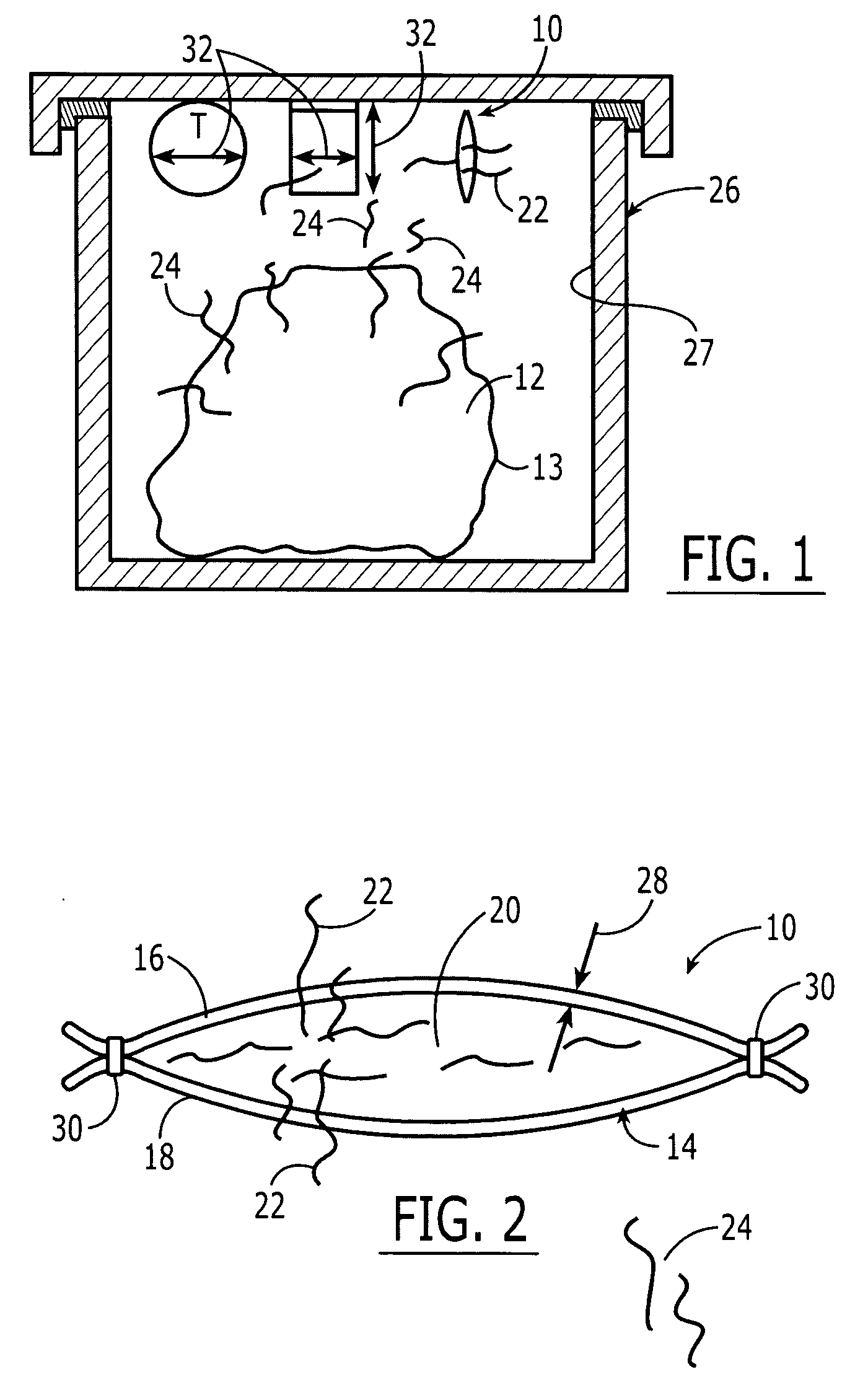Food freshness sensor
a sensor and food technology, applied in the field of pathogen detection devices and methods, can solve the problems of food spoilage, food borne diseases as well as food spoilage remain a significant burden in the global food supply, and the possibility of unacceptable levels of undetected food, so as to achieve the effect of safe consumption
- Summary
- Abstract
- Description
- Claims
- Application Information
AI Technical Summary
Benefits of technology
Problems solved by technology
Method used
Image
Examples
Embodiment Construction
[0025] The present invention will now be described more fully hereinafter with reference to the accompanying drawings, in which embodiments of the invention are described. This invention may, however, be embodied in many different forms and should not be construed to be limited to the embodiments set forth herein. Rather, these embodiments are provided so that this disclosure will be thorough and complete, and fully convey the scope of the invention to those skilled in the art. Like numbers refer to like elements throughout.
[0026] Referring initially to FIGS. 1 and 2, and by way of example, a sensor 10 in keeping with the teachings of the present invention for detecting a presence of bacteria from a perishable food product 12 includes a sealed container 14 having opposing gas permeable walls 16, 18 formed from a TPX (PMP) transparent thin film for viewing a pH sensitive solution 20 carried by the container 14. For one embodiment, the pH sensitive solution 20 has a generally green c...
PUM
 Login to View More
Login to View More Abstract
Description
Claims
Application Information
 Login to View More
Login to View More - R&D
- Intellectual Property
- Life Sciences
- Materials
- Tech Scout
- Unparalleled Data Quality
- Higher Quality Content
- 60% Fewer Hallucinations
Browse by: Latest US Patents, China's latest patents, Technical Efficacy Thesaurus, Application Domain, Technology Topic, Popular Technical Reports.
© 2025 PatSnap. All rights reserved.Legal|Privacy policy|Modern Slavery Act Transparency Statement|Sitemap|About US| Contact US: help@patsnap.com



